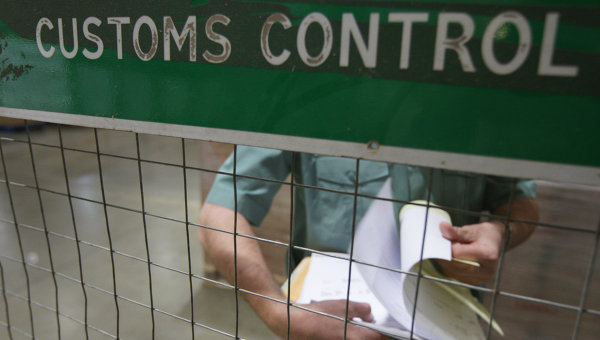
Russian-Led Customs Union Intensifies Sino-Russian Rivalry in Central Asia
Publication: Eurasia Daily Monitor Volume: 8 Issue: 147
By:

July 1 marked the launch of the now “fully operational” Customs Union (Belarus, Kazakhstan and Russia) fueling debate on the future of the post-Soviet space and even the grouping itself. Indeed, ruptures have already revealed themselves among existing members (such as the recent “tariff wars” between Russia and Belarus over dairy and oil imports), inviting substantial opposition from local and foreign audiences who view the union as Moscow’s tool to project its influence in what is increasingly a non-Russian backyard.
Against the stalled World Trade Organization (WTO) accession process, Russia’s stake in the Customs Union is widely viewed in economic and psychological terms given Moscow’s traditional need to bolster its image as a great power. Understandably for Moscow, however, the Customs Union is also grounded in political and security concerns about the “Middle Kingdom’s” economic expansion in the Far East and Central Asia. While many foreign observers are fixated on Russia’s related steps in the framework of its alleged stand-off against the West, many local ones increasingly interpret Russia’s push in the Customs Union in the context of Sino-Russian economic rivalry in energy-rich Central Asia.
With India, Pakistan and Iran seeking membership in the Sino-Russian-led Shanghai Cooperation Organization (SCO), Moscow may be forced to pay more attention to its Central and South Asian perimeter. In WikiLeaks, the Chinese Ambassador to Kazakhstan, Chen Gopin, offered his view of China’s position on Russia to his US counterpart: “I will have to cautiously balance between our growing cooperation in the region and Russian interests. However, we cannot harm our interests because of Russia. In Sino-Russian relations in Central Asia, there is both cooperation and competition. Our policy is to co-exist here, and we need to maintain a dialogue” (www.km.ru, June 14).
For Central Asia, China’s economic expansion and Russian-led integration schemes can be both a blessing and a curse. The region’s countries need China and Russia to develop as transit, trade, and production centers, but they cannot afford to become overly dependent on either. A standard guideline for the countries is not to yield to the extreme pressures of the two giants, one of which is increasingly on the defensive, and the other – more frequently on the offensive. In the context of the much-discussed Customs Union, doing just that is far from easy, particularly for Tajikistan and Kyrgyzstan, which are currently weighing the pros and cons of accession.
Both are poor countries, highly dependent on fuel imports (in the 90 percent range) and migrant remittances (billions of dollars) from Russia to sustain their fledgling economies. They also rely on “Silk Roads” visions to generate revenues from re-export and transit of Chinese goods. Kyrgyzstan and Tajikistan have recently seen fuel price hikes after Russian imposed restrictions on fuel exports. The Kyrgyz Prime Minister and the Presidential candidate, Almazbek Atambaev, already visited Moscow in an effort to secure more steady gas supplies. He has also called for Kyrgyz membership in the Customs Union (www.rferl.org, July 18).
Membership may help Kyrgyzstan and Tajikistan improve their bargaining position on energy imports, but it could also trigger a strong social backlash as a result of higher unemployment, increased prices, and reduced capacity to re-export Chinese goods (www.rosbalt.ru, July 1; www.pravda.kg, May 23). Kyrgyzstan is now a major regional transit point for Chinese products, with up to 75 percent of imports from China being re-exported. Tens of thousands of workers in the country are engaged in re-export activities. Two Kyrgyz large markets (Dordoi and Kara-Suu) generate about 33 percent of the country’s GDP (www.freemarket.kg). The Head of the Markets Association, Sergei Ponomarev, stated that the trade turnover involving Dordoi alone has already declined almost twofold following the launch of the Customs Union (www.pravda.kg, May 23). The trade turnover between Kyrgyzstan and the WTO was 48 percent in 2010, while between Kyrgyzstan and the Customs Union was only 1.9 percent (www.cacianalyst.org, July 6).
Bishkek and Dushanbe, as well as others in the region, look to China to overhaul their badly crippled Soviet-era economic infrastructures and revitalize economic flows across regions. In 2009, China offered $10 billion in loans to the SCO members “to shore up the struggling economies” in response to the global financial crisis (www.chinadaily.com.cn, June 16, 2009). Trade between China and Central Asia grew from $0.5 billion in 1992 to $25.9 billion in 2009. General Liu Yazhou of the People’s Liberation Army, says that Central Asia is “the thickest piece of cake given to the modern Chinese by the heavens” (www.the-diplomat.com, Accessed on July 26). The region is a platform for China to maintain its energy security, trade expansion, and territorial integrity. There is already a growing spree of infrastructure development funded by Beijing, which includes energy pipelines, roads, railways, and trade links connecting China with Eurasia through Central Asia.
For some, anchoring the regional economies to the controversial Customs Union would enable Moscow to deal with such a flurry of Chinese activity in Russia’s zone of “privileged interests.” For Russian Prime Minister, Vladimir Putin, the Customs Union is a logical step on the way toward creating a single economic space and a Eurasian Economic Union (www.dw-world.de, May 20). But whether Russia can achieve this remains an open question. Andrei Grozin, the head of the Middle Asia Department of the CIS Institute, believes that Russian policy toward Central Asia has experienced many setbacks in recent years (www.newsland.ru, April 19). For another expert, Sergei Chalogo, Russia’s designs in the post-Soviet space are a sham: “The [Eurasian Economic Community] EurAsEc’s anti-crisis fund is one’s own small IMF, the single economic space – one’s own EU, the Customs Union – one’s own WTO, while the [Collective Security Treaty Organization] CSTO – is one’s own NATO. That is, everything is as it should be with adults; only that nothing works” (www.dw-world.de, May 20).
It remains to be seen to what extent China is capable of affecting the Russian-led Customs Union agenda in Central Asia, where Sino-Russian ties are likely to enter a more completive mode.




